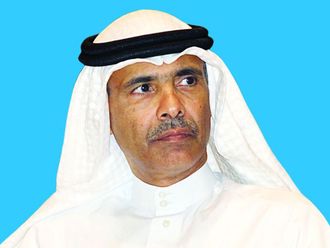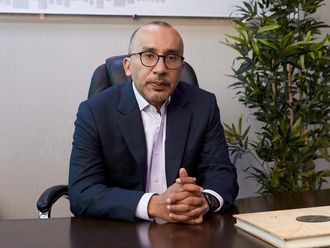Oman’s economy received mixed marks from the International Monetary Fund (IMF) following a visit by a delegation as part of the Article IV process. On the one hand, the sultanate received much praise for demonstrating the required capability to cut the budget deficit.
But there are concerns about the quite limited growth rate, with implications such as creating enough jobs for locals. Unemployment among locals is a challenge, partly due to the nature of available opportunities. And nationals demand employment that meet their desires with regard to compensation and career paths.
The budget deficit as a percentage of gross domestic product has declined from about 21 per cent in fiscal year 2016 to around 13 per cent.
The development serves as proof of Oman’s ability to address fiscal challenges. This was achieved via boosting treasury revenues together with controlling public sector expenditures. What’s more, there is the possibility of the gap being further reduced to as low as 4 per cent of GDP by 2020 via enhancing revenues. It is noteworthy that the authorities have announced a postponement of value-added tax (VAT) until 2019, reflecting the rather conservative minded economic policies.
In addition, Muscat opted to delay applying an excise tax on tobacco products plus soft and energy drinks. The other Gulf countries either started implementing VAT or the excise tax or both concurrently.
Saudi Arabia and the UAE opted to go in for both taxes, while Bahrain did so on cigarettes and the beverages from late last year. But it delayed the VAT roll-out, in a move to minimise public discomfort.
Such developments aside, there are concerns about growth rates, deemed as not being commensurate with the nature of the challenges facing Oman. Non-oil growth came to 2 per cent in 2017, up from 1.5 per cent.
Worryingly, the overall real GDP, adjusted for inflation, contracted by 0.3 per cent in 2017 on the back of a 2.8 per cent decline in the oil sector.
The development is partly attributed to a principled position adopted by Oman, namely that of cutting oil output in line with the Organisation of Petroleum Exporting Countries (Opec) move. Oman is not a member of Opec but its oil policy tends to mirror that of the energy bloc.
Certainly, the fall in oil output adversely affected hydrocarbon revenues notwithstanding the stronger oil prices in global markets. Presumably, this is a short-term phenomenon.
Regional dynamics have left their imprint prospects for the Oman economy, notably tensions between the US and Iran concerning Tehran’s nuclear programme. The nuclear issue is uniquely special for Oman, in turn credited for hosting secret talks between US and Iranian officials and paving the way for the historic accord.
A return of tension between the US and Iran could undermine opportunities for Oman’s ports, as well as plans to build a gas pipeline linking Iran, Oman and India.
There is hope of the sultanate overcoming such challenges by harnessing its long-term capabilities and then turning them into opportunities. The economy stands on solid ground, benefiting from the petroleum sector, plus the potential provided by the industrial, tourism and agricultural sectors.
It is up to Omani government officials to make full use of the potential in what is a highly competitive regional economic setting.
Jasim Ali is a member of the parliament in Bahrain.













